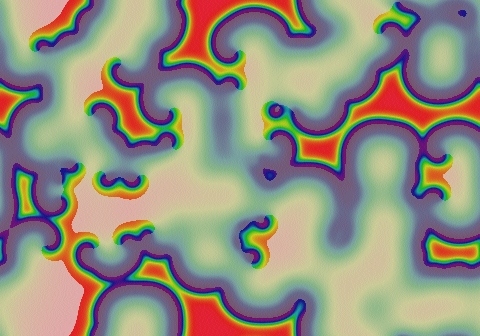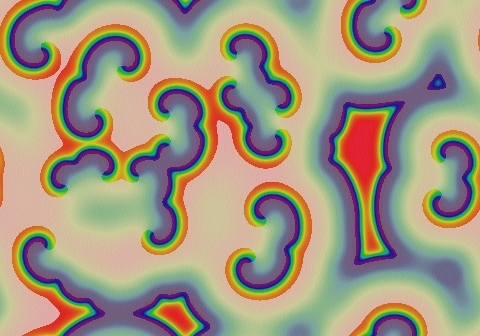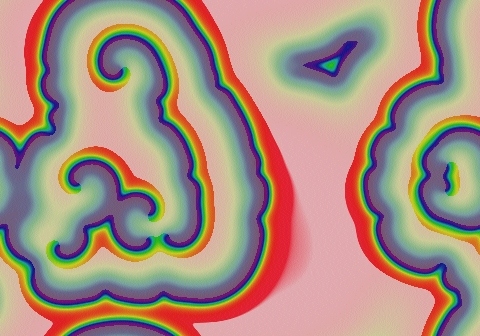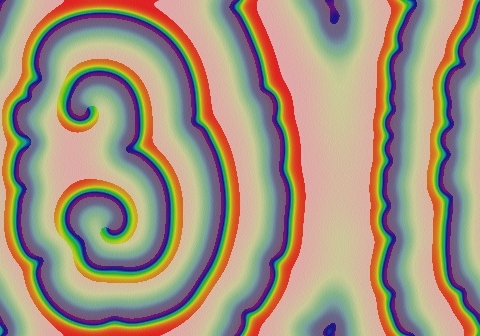Gray-Scott Model at F 0.0100, k 0.0430
These images and movie demonstrate the behavior of the Gray-Scott reaction-diffusion system with σ=Du/Dv=2 and parameters F=0.0100, k=0.0430.
These parameters support long-lasting spirals similar to those in the B-Z (Belousov-Zhabotinsky) reaction. This pattern continues as seen here until about 35,000 tu, when all spirals die out but a single, roughly linear wave front remains. The wave front continues to travel for over 12,900,000 tu.
This simulation was performed with the same starting pattern as that to the immediate east; note the initial similarity, and substantial differences after about the first 500 tu.
Categories: Munafo ξ; Wolfram 3 (glossary of terms)
 increase F increase F
 | |||
 decrease k  |


|
15 frames/sec.; each fr. is 22 iter. steps = 11 tu; 1801 fr. total (19,811 tu) |  increase k 
|

|


| ||
 decrease F decrease F
 |
In these images:
- Color indicates level of u, ranging from purple (lowest u values) through blue, aqua, green, yellow and pink/red (highest u values)
- Areas where u is increasing are lightened to a light pastel tone; where u is decreasing the color is vivid.
- In areas where u is changing by less than ±3×10-6 per tu, an intermediate pastel color is seen. This includes areas that are in steady state or equilibrium.
''tu'' is the dimensionless unit of time, and ''lu'' the dimensionless unit of length, implicit in the equations that define the reaction-diffusion model. The grids for these simulations use Δx=1/143 lu and Δt=1/2 tu; the system is 3.2 lu wide. The simulation meets itself at the edges (periodic boundary condition); all images tile seamlessly if used as wallpaper.
Go back to Gray-Scott pattern index
This page was written in the "embarrassingly readable" markup language RHTF, and was last updated on 2019 Jan 05.
 s.11
s.11